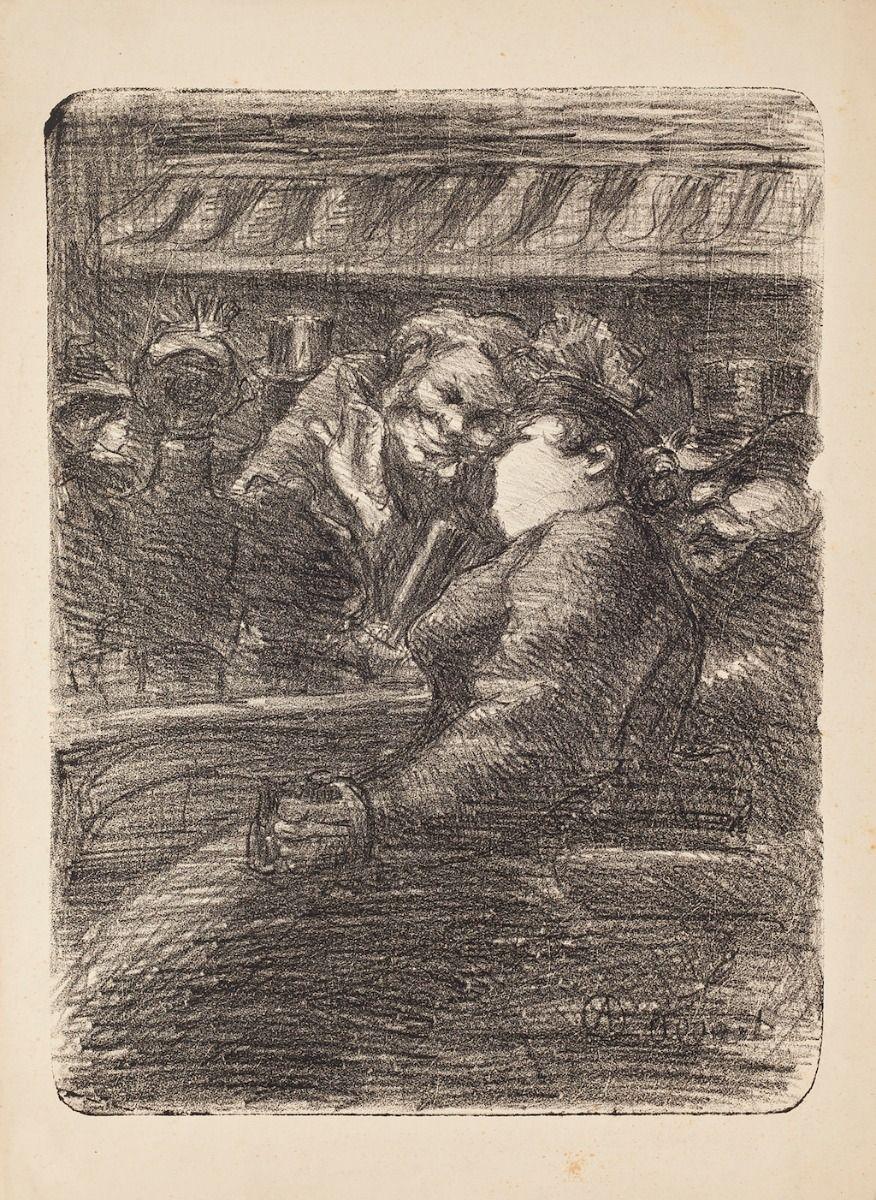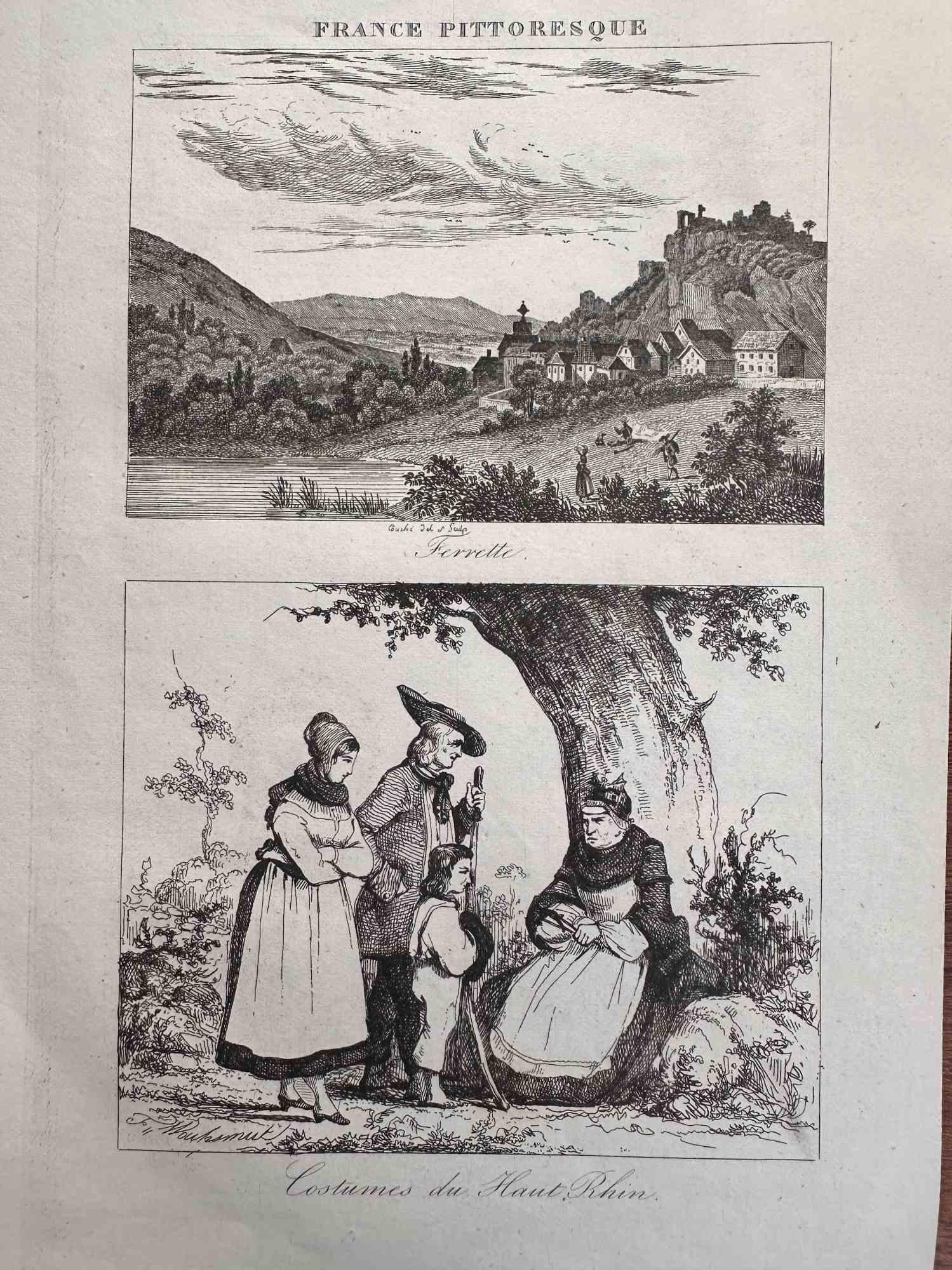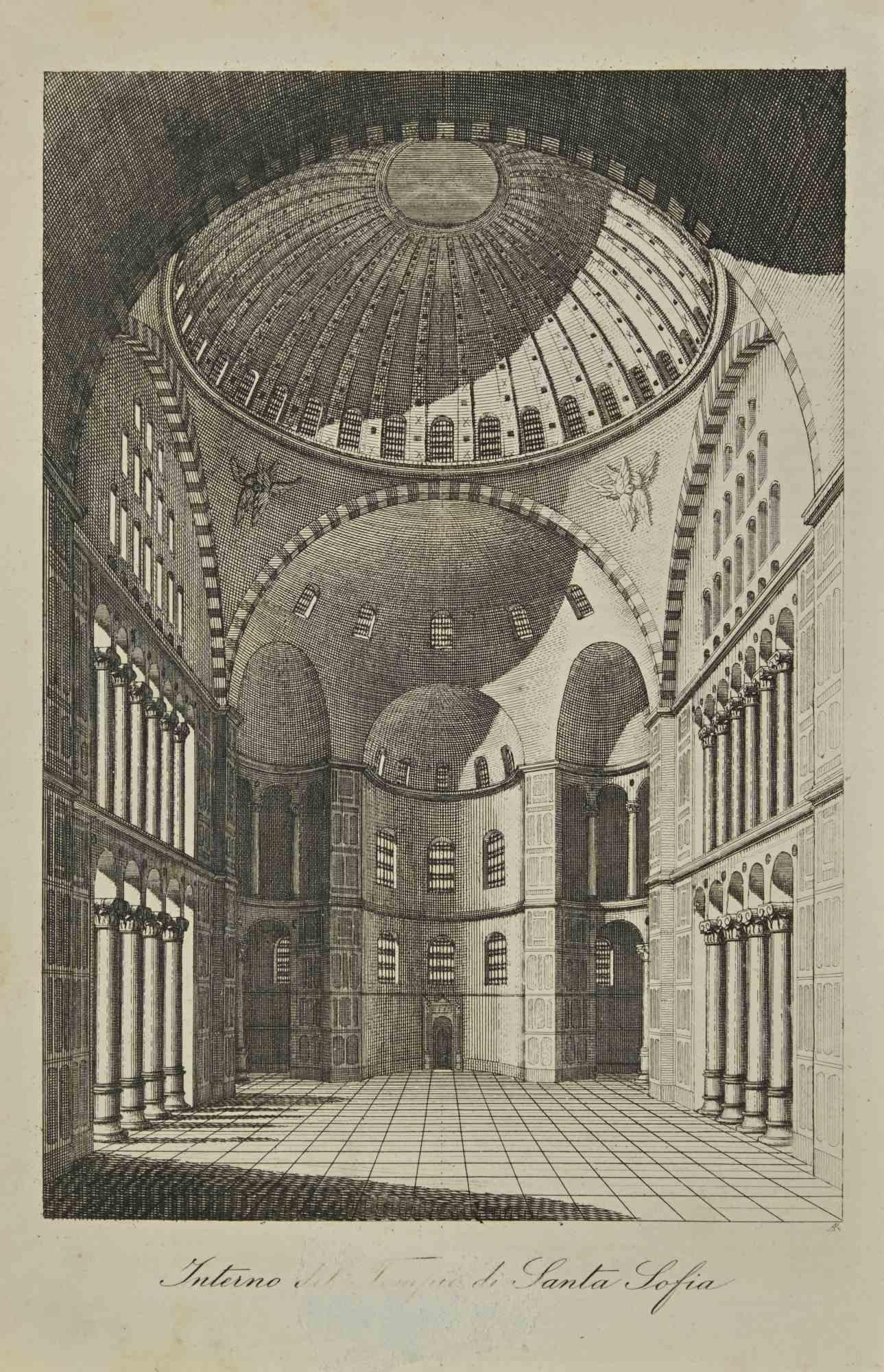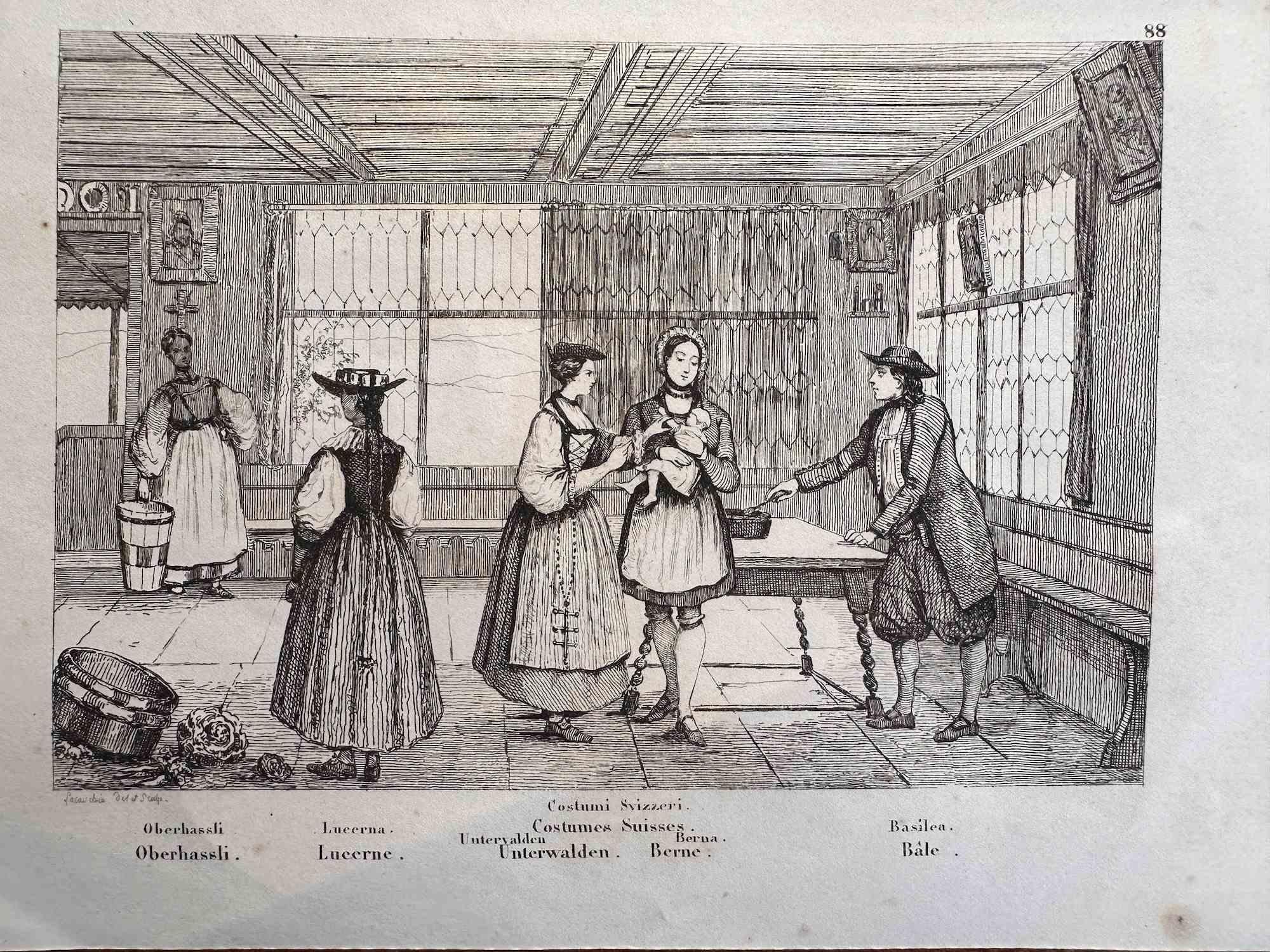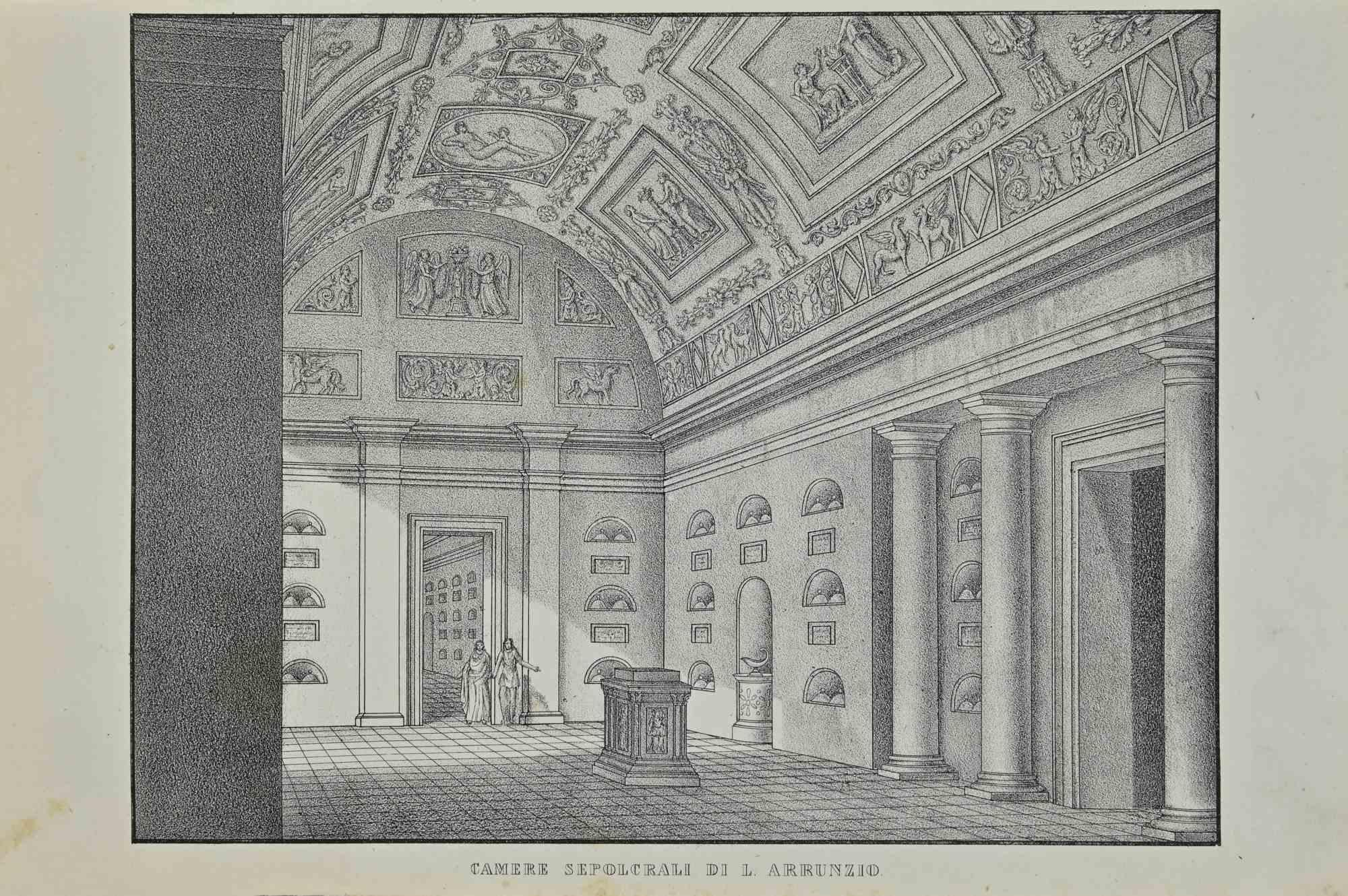Items Similar to Machpela Cave Chevron 1969 Israeli Judaica Lithograph Baruch Nachshon Chabad Art
Want more images or videos?
Request additional images or videos from the seller
1 of 9
Baruch NachshonMachpela Cave Chevron 1969 Israeli Judaica Lithograph Baruch Nachshon Chabad Art1969
1969
About the Item
Baruch Nachshon, was born in Mandatory Palestine in 1939, in the city of Haifa.
Nachshon began to paint in early childhood, and developed his relationship to art and to artists throughout his youth. During his military service Nachshon herded flocks for the IDF, an experience that imbued in him a love and appreciation for nature which figures prominently in his work until today. Upon completing his military service the young artist was torn between the temptation to travel to Paris, then the cultural center of the art world, and his deep love of the land of Israel, the spiritual center of the Jewish world. Opting to stay in Israel, Nachshon studied under Shlomo Nerani, Cezanne’s only pupil, with whom he had enjoyed a deep friendship extending back to his childhood. Nachshon, whom Nerani viewed as his spiritual heir, was the only one of his students allowed to see the master at work.
Nachshon’s lifelong involvement in Lubavitch Hassidut began in his early adulthood, when he was drawn to the movement by its uniquely beautiful traditional melodies. In 1965 Nachshon was invited to an unprecedented three- hour private session with the Rebbe of Lubavitch, Menachem Mendel Schneerson, in New York. The young artist used the opportunity to share his concerns and misgivings about the role of the Jewish artist and the many inherent conflicts which confronted him. The Rebbe blessed Nachshon with the advice that for many generations the art of painting had failed to find its ultimate rectification in holiness, but that with the help of God he might come to bring about that long anticipated rectification. The Rebbe then offered to fund Nachshon’s studies in New York on the condition that he would find a program of study acceptable to Jewish religious values. Despite the difficulty inherent in such a task, Nachshon gladly received the Rebbe’s offer and devoted himself fully to the celebration of the wisdom of the Creator through visual art.
In 1967 Nachshon and his wife Sara, along with six other families renewed the Jewish presence in Hebron for the first time since the city’s Jewish residents were massacred by Arabs in 1929. To underscore the significance of Jewish culture to the city, Nacshon opened a gallery of his art beside the Tomb of the Patriarchs. During this period Nachshon also used to visit the houses of Hebron’s Arab residents in order to paint the city from unique angles. On one of his regular visits to the Tomb of the Patriarchs, Nachshon met an elderly Breslov Hassid. The hassid urged him to recite Psalms every night for forty days, and assured him that if he did so he would merit profound revelation. Nachshon did so, and as soon as the forty days had passed he saw the heavens open, receiving visions that would charge his art forever. Since that first time, Nachshon has seen the heavens open many times and, indeed, the opening of the heavens is a recurring motif in his work. According to Nachshon, “the open sky means going beyond what is reality, seeing through.”
Nachshon’s art covers a wide range of thematic material through equally diverse stylistic approaches, all of which are uniquely his own. He paints in order to define and to emphasize the presence of the active Divine Will in creation, and in order to inspire himself and others. Nachshon paints what he sees through the eyes of an inspired painter, communicating those visions to the world. Each of his paintings can be studied in the manner of a sacred text, providing numerous and vivid insights into the workings of creation and the promises held for the future. Many of his paintings describe visions of the future, of the world after its final redemption, of a world where all is peace and joy and where the revelation of divine beneficence is clear to all. Until that time, Nachshon’s paintings offer a glimpse of what could be, of what ought to be and of what will be when the work of humanity has reached its successful completion
The Artist’s Prayer
I express my gratitude to you, artisan of creation, for you have endowed me with the spirit of your holy inspiration.
I beseech you- in your vast kindness- impart to me more and more of your holy inspiration so that I may rejoice in you, and give cause for rejoicing to your creations. Give me inspiration to reveal your presence, even in the darkest places, because everything is from you and before your presence all darkness is also light. You created your universe, and within it crafted all of your creatures so that they would come to acknowledge you.
And so- this, indeed is all I ask- kindness! For there is nothing else, no words in our mouths sufficient to thank you for having created us, having made us your children- the Children of Israel- and having brought us close to you in order to serve you. You have drawn forth our spirit and illuminated all- Well of Life.
-Baruch Nachshon, Hebron, 5749
Participated in group exhibitions in the Artists' Quarter in Safed, Tel Aviv, Jerusalem, in the Chai Gallery, Chabad Chassidic Art Institute in Brooklyn, and in other art galleries in Brooklyn. Championed by the Chai Gallery in Crown Heights, Brooklyn New York, they have represented all of the major Lubavitch Hasidic artists such as Baruch Nachshon, Hendel Lieberman, Zalman Kleinman, Michoel Muchnik as well as artists such as Samuel Rothbort, Harry Mccormick, Meer Akselrod and the Rebbe photos of Fridrich Vishinsky.
- Creator:Baruch Nachshon (1939, Israeli)
- Creation Year:1969
- Dimensions:Height: 19 in (48.26 cm)Width: 13.25 in (33.66 cm)
- Medium:
- Movement & Style:
- Period:
- Condition:
- Gallery Location:Surfside, FL
- Reference Number:1stDibs: LU38214290582
About the Seller
4.9
Platinum Seller
These expertly vetted sellers are 1stDibs' most experienced sellers and are rated highest by our customers.
Established in 1995
1stDibs seller since 2014
1,559 sales on 1stDibs
Typical response time: 1 hour
- ShippingRetrieving quote...Ships From: Surfside, FL
- Return PolicyA return for this item may be initiated within 3 days of delivery.
More From This SellerView All
- Vintage Russian Ukrainian Soldiers in Forest Scene Judaica Lithograph Jewish ArtBy Anatoli Lvovich KaplanLocated in Surfside, FLPencil signed and dated, Russian Soviet Judaica Lithograph. Anatoli Lwowitch Kaplan was a Russian painter, sculptor and printmaker, whose works often reflect his Jewish origins. His...Category
Mid-20th Century Modern Figurative Prints
MaterialsLithograph
- 1936 Lithograph Interregnum Portfolio Butcher Shop Small Edition Weimar GermanyBy George GroszLocated in Surfside, FLHand lithography on BFK Rives French hand moulded paper Style: German New Objectivity (Neue Sachlichkeit) According to the frontis these were produced by Hand Lithography. According...Category
1930s Modern Interior Prints
MaterialsLithograph
- 1936 Lithograph Interregnum portfolio Artist Studio small edition Weimar GermanyBy George GroszLocated in Surfside, FLHand lithography on BFK Rives French hand moulded paper Style: German New Objectivity (Neue Sachlichkeit) According to the frontis these were produced by Hand Lithography. According...Category
1930s Modern Interior Prints
MaterialsLithograph
- 1936 Lithograph Interregnum Portfolio Windblown Man Small Edition Weimar GermanyBy George GroszLocated in Surfside, FLHand lithography on BFK Rives French hand moulded paper Style: German New Objectivity (Neue Sachlichkeit) According to the frontis these were produced by Hand Lithography. According...Category
1930s Modern Interior Prints
MaterialsLithograph
- Israeli Expressionist Yosl Bergner Modernist Lithograph Kibbutz Coffee GrinderBy Yosl BergnerLocated in Surfside, FLAbstract Composition, Coffee Grinder Hand signed in Hebrew Lower right. limited edition. Dimensions: H 18.5" x 24.9" Bergner, Yosl (Vladimir Jossif) (b Vienna, 13 Oct 1920). surrealist, surrealism. belongs to the generation of people uprooted from childhood landscapes and forced by circumstance to build a life elsewhere. Uniquely, he became an Israeli without shedding his Jewish cosmopolitan-refugee identity, an identity he zealously guarded in the melting pot of Israel of the "fifties" and "sixties". In the years that have passed since he acquired his art education at the Melbourne National Gallery Art School in Australia, concepts in the art world have changed many times over. from the Jewish paintings and the depictions of Australian Aborigines through the children of safed, the wall paintings, the masks, the angels and kings, the still lifes, the "Surrealistic" paintings, the toys and flowers, the paintings inspired by the Bird-head Haggadah, the Kafka paintings, the Pioneers, the Kimberley fantasy (about his father's excursion in 1933 to northern Australia, in search of a "territory for the Jews"), Brighton Beach and the seascapes inspired by Eugene Boudin, through the chairs in the "Kings of Nissim Aloni" episode to the "Zionists" and the recent "Tahies". "During the six years that Bergner has lived in Israel," wrote Eugene KoIb, Direct. or of the Tel Aviv Museum, in the catalog of the Bergner exhibit in 1957, "he has established himself among Israeli artists." Bergner was indeed one of the artists who represented Israel in the Venice Biennial (1956; 1958) and in the Sao Paulo Biennial in 1957; this, in spite of the fact that Yosl Bergner did not harness his art to serve the Zionist ethos, that being, at the time, the order of the day (his paintings were in fact rejected at first as being those of a "Diaspora Jew"); he didn't "naturalize" himself by alliance to the country's landscape or its special light, nor did he turn to abstract painting. Painter of "the Jewish condition". the painter involved in Nissim Aloni's theater and the popular illustrator of poetry books and literary texts, he stuck to the narrative which drew its images from his childhood world, from Yiddish and from the Jewish culture of Poland in whose bosom he grew, with its literature, theater and fantasy. From this point of view his position as an "outsider", first in Australia and later in Israel, like that of the European Jew on the periphery of the dominant culture, afforded him a special dialectic vantage point from which to view his human and cultural surroundings. He was and remains a figurative painter even when he verges on the abstract. Israeli painter of Austrian birth, active in Australia. He grew up in Warsaw. His father, the pseudonymous Jewish writer Melech Ravitch, owned books on German Expressionism, which were an early influence. Conscious of rising anti-Semitism in Poland, Ravitch visited Australia in 1934 and later arranged for his family to settle there. Bergner arrived in Melbourne in 1937. Poor, and with little English, his struggle to paint went hand-in-hand with a struggle to survive. In 1939 he attended the National Gallery of Victoria’s art school and came into contact with a group of young artists including Victor O’Connor (b 1918) and Noel Counihan...Category
Mid-20th Century Modern Figurative Prints
MaterialsScreen, Lithograph
- Israeli Jerusalem Judaica Sephardic Rabbi, Boy, Torah Art Drawing Bezalel SchoolBy Jossi SternLocated in Surfside, FLVibrant lithograph by Israeli master JOSSI STERN. on paper mounted to board. Sefardic Rabbi studying with son Torah. 23 x 21 framed 13.5 x 19.5 Hungary, b. 1923, d. 1992 Jossi (Yossi) Stern, son of David and Katerina, was born in the Bakon Hills of Hungary, in 1923. He was already drawing when at the age of ten he moved with his family from the Bakon Hill region to the considerably more cosmopolitan Budapest. Recognizing the looming threat of Hitler and the pending Nazi invasion of Hungary, in 1940, at the age of seventeen, the young artist made his way to Palestine aboard the Sakaria, an old ship heavily crowded with 2,300 other refugees. Before reaching the shores of Palestine, then under the British Mandate, the British Navy intercepted the ship and declared Stern and all those aboard illegal immigrants. Stern was sent to a prison camp where he remained incarcerated by the British for six months. In 1943, having spent a few years doing agricultural work, Stern was encouraged by close friends who recognized his artistic talent to enroll in the prestigious Bezalel School of the Arts in Jerusalem. An outstanding student, he eventually became a highly respected teacher of Graphic Arts at Bezalel. Stern is recognized in Israel as having been one of the country's premier artists. His drawings are exhibited and appear in many publications and museums worldwide. Stern was the recipient of numerous awards including the Jerusalem Medal as well as both the UNESCO and Herzl Prize. He was included in the exhibition New Bezalel Artists' House, Jerusalem Tel Aviv Museum, along with Artists: Ludwig Wolpert, Joseph Budko, Gershon Knispel, Gershon Avigdor Arikha, Maryan, Jacob Steinhardt, Ruth Schloss...Category
20th Century Modern Figurative Prints
MaterialsLithograph
You May Also Like
- Conversation - Lithograph by Adolphe Albert - 20th CenturyLocated in Roma, ITConversation is an original lithograph artwork realized by Adolphe Albert (1855-1938). Signed on the plate, The state of preservation is very good. The artwork represents a convers...Category
20th Century Modern Figurative Prints
MaterialsLithograph
- Ancient Costume - Haut Rhine - Lithograph - Late 19th centuryLocated in Roma, ITAncient Costume - Haut Rhine is a lithograph print on paper in the Late 19th century. Good conditions. From the suite of "France Pittoresques, including costume of the world.Category
Late 19th Century Modern Figurative Prints
MaterialsLithograph
- Temple of Saint Sophia - Lithograph - 1862Located in Roma, ITTemple of Saint Sophia is a lithograph on paper realized in 1862. The artwork belongs to the Suite Uses and customs of all the peoples of the universe: " History of the government, ...Category
1860s Modern Figurative Prints
MaterialsLithograph
- Swiss Costume - Lithograph - Late 19th centuryLocated in Roma, ITSwiss Costume is a lithograph print on paper in the Late 19th century. Good conditions. From the suite of "France Pittoresques, including costume of the world".Category
Late 19th Century Modern Figurative Prints
MaterialsLithograph
- Uses and Customs - Burial Chamber - Lithograph - 1862Located in Roma, ITUses and Customs - Burial Chamber is a lithograph on paper realized in 1862. The artwork belongs to the Suite Uses and customs of all the peoples of the universe: " History of the g...Category
1860s Modern Figurative Prints
MaterialsLithograph
- Jean Cocteau (after) - Spanish Party - LithographBy Jean CocteauLocated in Collonge Bellerive, Geneve, CHLithograph after a drawing by Jean Cocteau Title: Spanish Party 1971 signed in the stone/printed signature Dimensions: 38 x 28 cm Lithograph made for the portfolio "Gitans et Corrida...Category
1960s Modern Interior Prints
MaterialsLithograph
